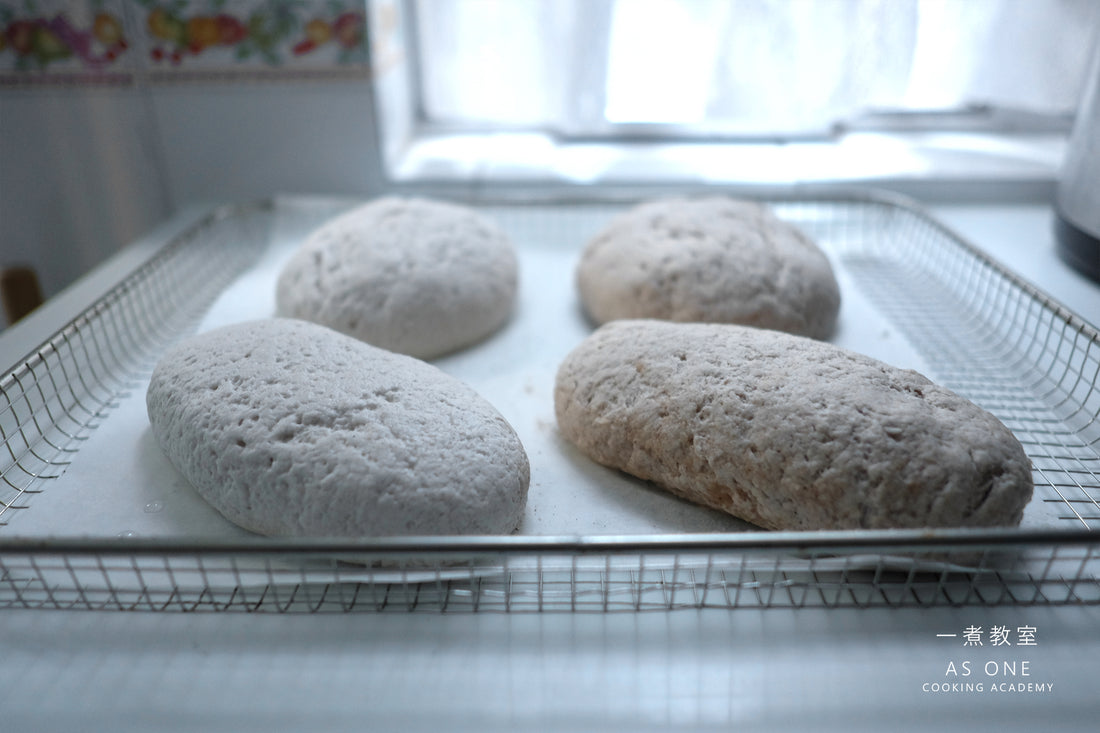
Gluten-free-baking: Xanthan Gum vs Psyllium husk Powder 無麩質烘焙: 黃原膠比拼洋車前子殼粉
Many people are concerned about the use of xanthan gum and want a "more natural replacement." (Although I don't find anything bad with xanthan gum and personally don't think it is some kinds of harmful chemical additives that need to be concerned)
Xanthan gum comes from the secretions of the Xanthomonas campestris bacteria after a glucose-induced fermentation process.
Apart from guar gum (which is extracted from natural guar beans), psyllium husk powder seems a "healthier choice".
So I carried some tests to make gluten-free, egg-free, vegan bread with psyllium husk powder.
It was my first time playing this powder. I have high expectations of this powder as so many bloggers and books are promoting it.
I followed the "Master Recipe" from this book Gluten-Free Artisan Bread in Five Minutes a Day - both plain white and whole grain version.
My First Experiment
Here are the gluten-free vegan doughs (left side was whole grain and the right side was plain white).
The binding power of the psyllium husk powder is quite strong which makes the gluten-free dough more shapable.


The recipe calls for fermentation of 2 hours. This was how they looked like after proofing. The size was greatly increased (which made me happy).

They were proofed for another 30 minutes after sharing.
Everything seemed nice.

Before putting them into the oven, I sliced the dough hoping to have a nice "oven spring".

This is how the bread looked like after baking for 40 minutes.
No oven spring. No expansion at all (seems even smaller).


Then I cut open to see the structure inside. It was very disappointing. No holes at all even after fermented for so long! The structure was super dense. (。╯︵╰。)

I wonder if it is because of the recipe I used? What went wrong?
So I decided to test AGAIN with a recipe I familiar - the Bread of Life which I have been selling this gluten-free vegan bread for over half year till now.
My Second Experiment
With the recipe that cannot go wrong, I replaced xanthan gum to psyllium husk powder.
I noticed something was wrong already during proofing. The dough just stopped to rise like it used to. It was still the same even I waited 20 minutes more.

So I put this into the oven anyway. Below was the bread freshly out from the oven.

Again, the bread shrank a bit after baking and not as soft.
When I cut open the bread, it was SUPER DENSE like a cake.
Notice the photo on the right which shall be the normal bread. There are beautiful holes all over. The one on the left with psyllium husk does not have any holes.

CLOSER LOOK.....(also tuned brighter)...the bread shall suppose to look like this with the beautiful holes:

But now is like this:

Lesson Learnt
So why adding psyllium husk powder result in such a dense bread? (I would say the "bread" in these two experiments completely failed. They were not bread) Why do those books and bloggers love to use this powder?
I browse the internet and found the article written by Annalise Roberts in 2014 so useful.
She was getting similar results like mine in her experiments and provided a very good explanation of what is happening.
She wrote:
"So while psyllium husk is very useful for holding in the carbon dioxide based gas bubbles during proofing, once you put the bread into a hot oven and it starts to bake and the internal temperature rises, the loaf will ultimately collapse – IF you are depending only on psyllium husk to give structure to the bread."
Her explanation solved the mystery.
Lessons learnt!
I hope the results from my experiment would be useful to those that plan to try gluten-free baking. You can still use psyllium husk but just have to understand that you will have a dense end-product that look and taste even more like gluten-free bread (especially if you are not using eggs).
